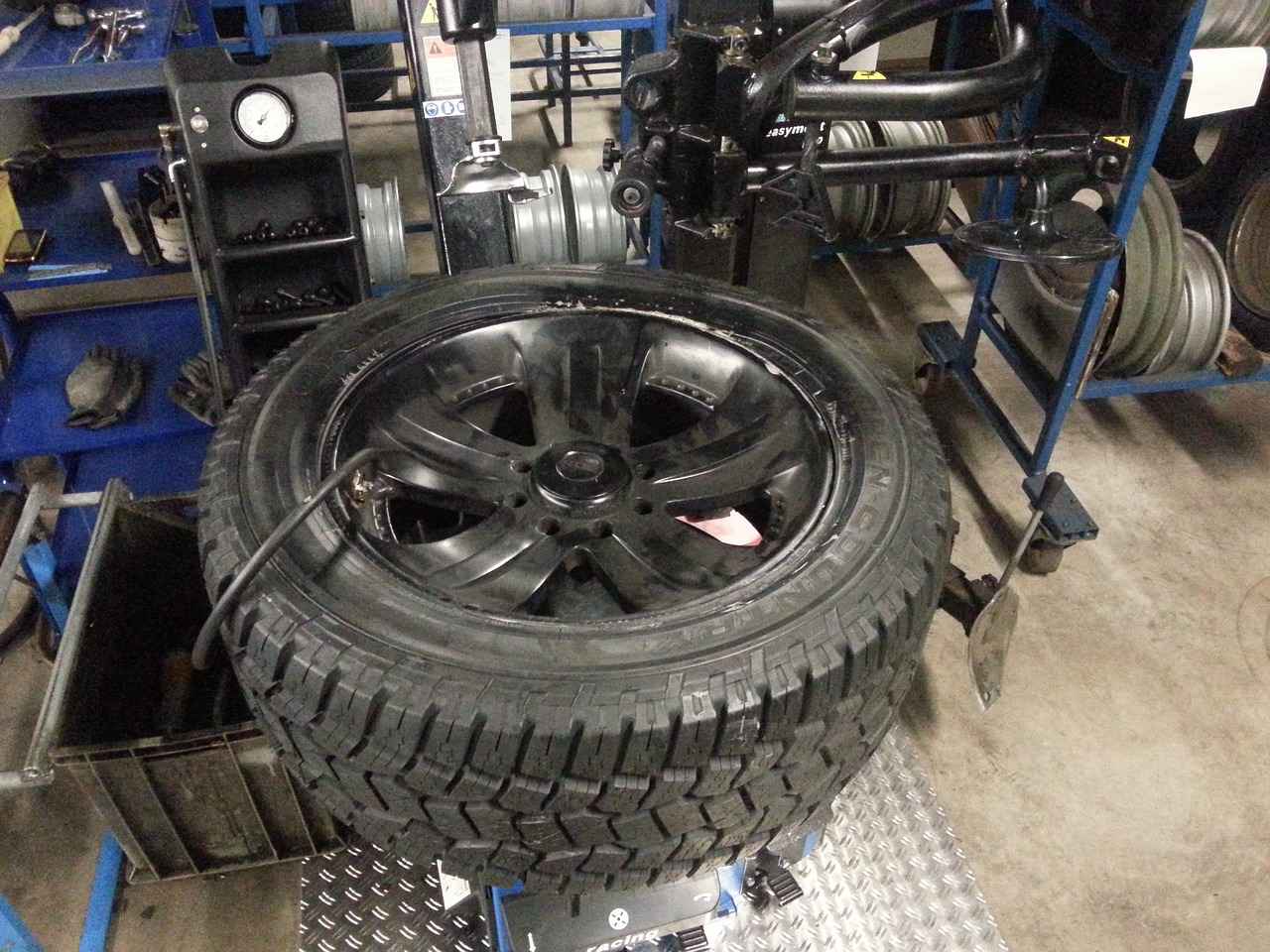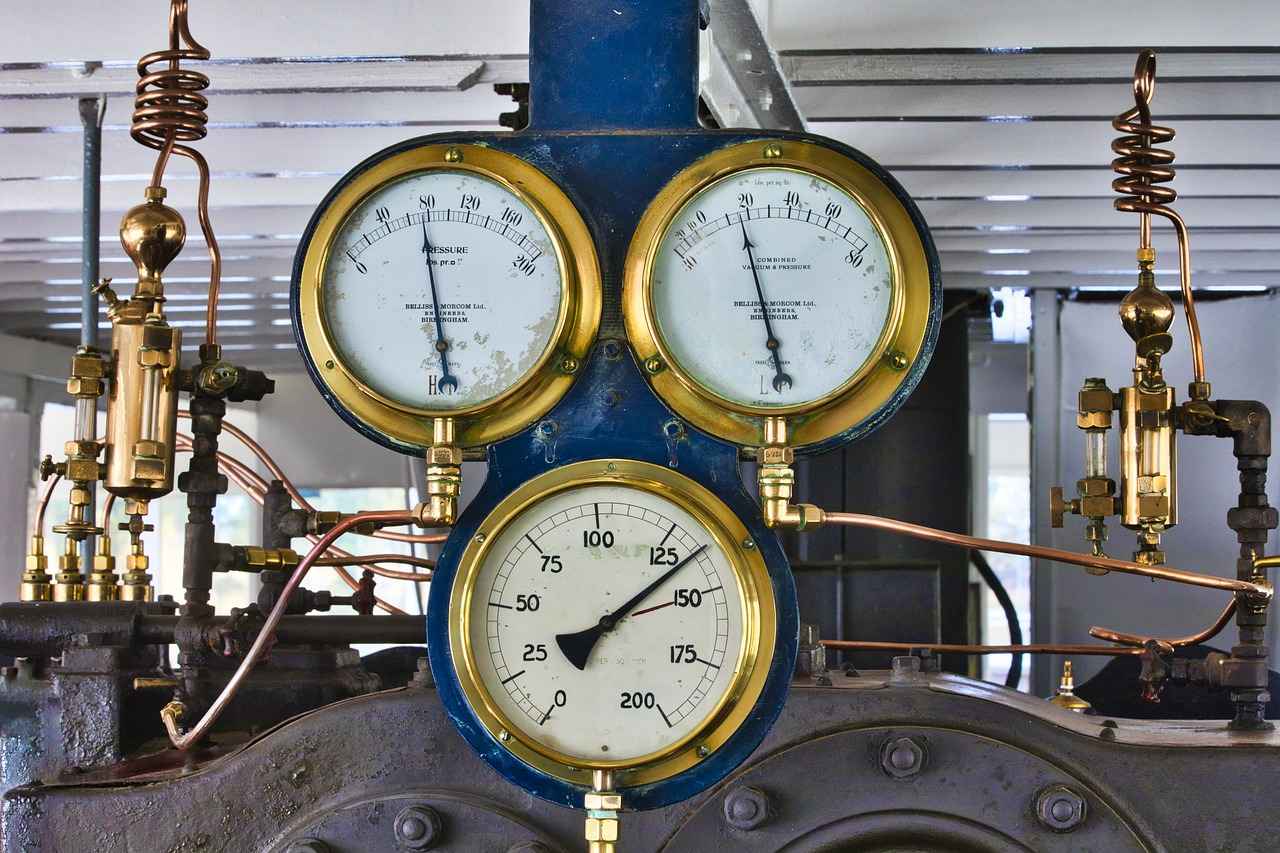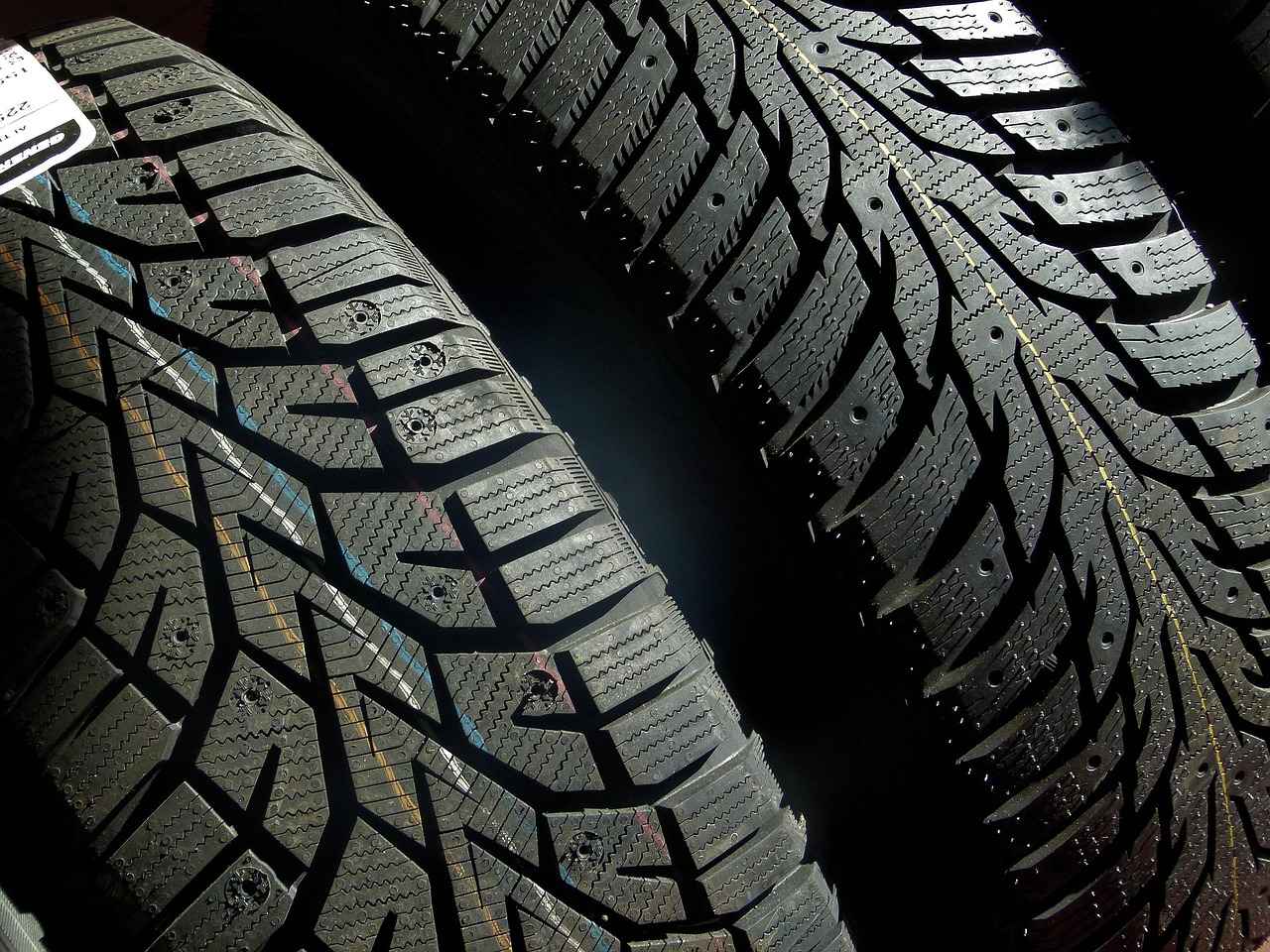This article provides a comprehensive guide on resetting the tire pressure light in a Honda Accord, ensuring optimal vehicle performance and safety. Follow these steps for a successful reset.
Understanding the common causes behind the tire pressure light activation is crucial for timely intervention and vehicle safety. The tire pressure light may illuminate due to:
- Under-inflated tires: This is the most common reason for the warning light. Low pressure can result from temperature changes or slow leaks.
- Over-inflated tires: Excessive pressure can also trigger the light, especially when tires are filled beyond recommended levels.
- Temperature fluctuations: Sudden changes in temperature can affect tire pressure, causing the light to activate.
- Faulty sensors: Sometimes, the tire pressure monitoring system (TPMS) sensors may malfunction, leading to false warnings.
Before resetting the tire pressure light, it’s essential to confirm the actual tire pressure. Follow these steps:
- Remove the valve cap from the tire.
- Press a tire gauge onto the valve stem to get a reading.
- Compare the reading with the recommended pressure found on the driver’s side door jamb.
Adjust the pressure as needed, then proceed to reset the light.
Proper tire pressure is vital for vehicle performance, fuel efficiency, and safety. Here are some benefits of maintaining optimal tire pressure:
- Improved fuel efficiency: Correctly inflated tires reduce rolling resistance, enhancing gas mileage.
- Enhanced safety: Proper pressure ensures better traction and handling, reducing the risk of accidents.
- Longer tire lifespan: Maintaining the right pressure prevents uneven wear, extending the life of your tires.
Gathering the right tools simplifies the reset process. Here’s what you’ll need:
- A tire pressure gauge
- A portable air compressor (if necessary)
- Your vehicle’s owner manual
Follow these steps to reset the tire pressure light:
- Turn on the Ignition: Insert the key and turn it to the “ON” position without starting the engine.
- Locate the Tire Pressure Monitoring System (TPMS) Button: This button is usually found beneath the steering wheel or on the dashboard.
- Press and Hold the TPMS Button: Hold the button until the tire pressure light blinks three times, then release it.
If the tire pressure light does not turn off after the reset, further investigation is necessary. Consider the following:
- Recheck the tire pressures manually.
- Inspect for any visible damage to the tires.
- Consult a professional if the light persists, as it may indicate a malfunctioning sensor.
Regular tire pressure checks are essential for vehicle maintenance. It is recommended to check tire pressure at least once a month and before long trips.
Many Honda Accord owners can reset the tire pressure light on their own. With the right tools and knowledge, this task is straightforward and can save you time and money.
While many tire pressure issues can be resolved at home, some require expert intervention. Seek professional help if:
- You notice consistent pressure loss despite refilling.
- There are signs of tire damage or wear.
- The TPMS light continues to illuminate after a reset.

What Triggers the Tire Pressure Light in a Honda Accord?
Understanding the common causes behind the tire pressure light activation is crucial for timely intervention and vehicle safety. The tire pressure monitoring system (TPMS) in your Honda Accord is designed to alert you when the tire pressure is too low or too high, which can lead to various driving hazards. Below are some of the most common factors that can trigger this warning light:
- Low Tire Pressure: The most frequent cause of the tire pressure light activation is low tire pressure. This can occur due to natural air loss over time, temperature changes, or a puncture. Regularly checking your tire pressure can help prevent this issue.
- Temperature Fluctuations: Tires can lose pressure as temperatures drop. For every 10-degree Fahrenheit decrease in temperature, tire pressure can drop by about 1 psi. Be vigilant about checking your tire pressure during seasonal changes.
- Tire Damage: Punctures, cuts, or sidewall bulges can cause air to escape from the tire. If you notice any visible damage, it’s essential to inspect the tire or seek professional assistance immediately.
- Improper Tire Installation: If tires are not installed correctly, they may not seal properly with the rim, leading to air leaks. Ensure that any tire changes or rotations are performed by a qualified technician.
- Faulty TPMS Sensor: Sometimes, the tire pressure light may illuminate due to a malfunctioning TPMS sensor. If the sensors are damaged or worn out, they may not provide accurate readings, leading to false alerts.
- Overinflation: While low pressure is a common issue, overinflated tires can also trigger the light. This can lead to uneven tire wear and decreased traction. Always adhere to the manufacturer’s recommended tire pressure.
- Seasonal Tire Changes: Switching between summer and winter tires can also cause the TPMS light to activate if the new tires have different pressure requirements. Make sure to reset the system after changing tires.
Being aware of these triggers allows you to take proactive measures in maintaining your vehicle’s tire health. Regular checks and timely intervention can prevent potential accidents and ensure a smoother driving experience. Always consult your vehicle’s manual for specific guidelines related to tire pressure and TPMS functionality.
In summary, keeping an eye on your tire pressure and understanding what can trigger the tire pressure light is essential for the safety and performance of your Honda Accord. By addressing these issues promptly, you can enhance your vehicle’s longevity and maintain optimal driving conditions.

How to Check Tire Pressure Manually?
Checking tire pressure manually is a crucial step in maintaining your vehicle’s safety and performance. Before resetting the tire pressure light, it is essential to confirm the actual tire pressure. This process not only ensures that your tires are properly inflated but also helps in identifying any potential issues that could affect your driving experience.
Follow these straightforward steps to effectively check your tire pressure:
- Gather Your Tools: You will need a reliable tire pressure gauge. These can be digital or analog, and they are widely available at auto parts stores.
- Check the Recommended Pressure: Before you start, locate the recommended tire pressure for your vehicle. This information is usually found on a sticker inside the driver’s side door or in the owner’s manual.
- Ensure Tires are Cold: For the most accurate reading, check your tire pressure when the tires are cold. This means the vehicle has not been driven for at least three hours.
- Remove the Valve Cap: Unscrew the valve cap on the tire you want to check. Keep it in a safe place to avoid losing it.
- Press the Tire Gauge: Firmly press the tire gauge onto the valve stem. Ensure that you create a good seal to avoid air escaping, which can lead to an inaccurate reading.
- Read the Pressure: Look at the gauge to determine the tire pressure. If you are using a digital gauge, the reading will display on the screen. For analog gauges, the needle will point to the pressure measurement.
- Compare with Recommended Pressure: Compare the reading from your gauge with the recommended tire pressure. If the pressure is too low, you will need to inflate the tire; if it is too high, you may need to release some air.
- Replace the Valve Cap: After checking, remember to screw the valve cap back on to protect the valve from dirt and moisture.
Maintaining the correct tire pressure is vital for several reasons:
- Improved Safety: Properly inflated tires provide better traction and handling, reducing the risk of accidents.
- Enhanced Fuel Efficiency: Under-inflated tires can lead to increased rolling resistance, causing your vehicle to consume more fuel.
- Extended Tire Life: Regular checks can prevent uneven wear and prolong the lifespan of your tires.
- Better Performance: Correct tire pressure ensures optimal performance, enhancing your driving experience.
By following these steps and understanding the importance of maintaining proper tire pressure, you can ensure a safer and more efficient driving experience. Regular checks will not only help in resetting the tire pressure light effectively but also contribute to the overall health of your vehicle.

Why is Maintaining Proper Tire Pressure Important?
Maintaining proper tire pressure is crucial for ensuring your vehicle operates efficiently and safely. When the tire pressure is at an optimal level, it not only enhances vehicle performance but also contributes significantly to fuel efficiency and overall safety. Let’s delve into the benefits of keeping your tires properly inflated and the potential risks of neglecting this important maintenance task.
- Improved Fuel Efficiency: Properly inflated tires can lead to better fuel economy. Under-inflated tires increase rolling resistance, causing the engine to work harder and consume more fuel. Studies show that maintaining optimal tire pressure can improve fuel efficiency by up to 3%.
- Enhanced Vehicle Handling: Tires that are inflated to the recommended pressure provide better traction and handling. This is especially important during adverse weather conditions, where proper grip can be the difference between safe driving and losing control.
- Extended Tire Life: Maintaining the correct tire pressure reduces uneven wear on the tires, leading to a longer lifespan. This means fewer replacements and savings on tire costs over time.
- Increased Safety: Proper tire pressure is essential for safe driving. Tires that are too low can overheat and lead to blowouts, while over-inflated tires can cause reduced traction and handling issues. Ensuring your tires are at the right pressure can prevent accidents and enhance your safety on the road.
- Environmental Benefits: Improved fuel efficiency not only saves money but also reduces your carbon footprint. By maintaining proper tire pressure, you’re contributing to a healthier environment.
Neglecting to monitor and maintain tire pressure can lead to several serious issues:
- Increased Risk of Accidents: Low tire pressure can lead to poor handling and longer stopping distances, significantly increasing the risk of accidents.
- Higher Fuel Costs: As mentioned earlier, under-inflated tires can reduce fuel efficiency, leading to higher fuel costs over time.
- Shortened Tire Lifespan: Tires that are not properly inflated wear out faster, leading to more frequent replacements and higher costs.
- Potential for Blowouts: One of the most dangerous risks of driving on under-inflated tires is the possibility of blowouts, which can lead to loss of vehicle control.
In conclusion, maintaining proper tire pressure is not merely a recommendation but a necessity for anyone who wants to ensure their vehicle operates safely and efficiently. Regularly checking your tire pressure can save you money, enhance your driving experience, and most importantly, keep you safe on the road. Make it a habit to check your tire pressure at least once a month and before long trips to enjoy the full benefits of your vehicle.

What Tools Do You Need to Reset the Tire Pressure Light?
When it comes to maintaining your Honda Accord, ensuring that the tire pressure light is functioning correctly is essential for both safety and performance. One of the first steps in this process is gathering the right tools. Having the appropriate equipment simplifies the reset process and can save you time and frustration. Below, we will outline the necessary tools and equipment required for resetting the tire pressure light in your Honda Accord.
- Tire Pressure Gauge: This is a must-have tool for checking your tire pressure accurately. A digital or dial gauge can provide precise readings, ensuring that you know exactly what adjustments are needed.
- Air Compressor: If your tires are low on air, an air compressor will help you inflate them to the recommended pressure. Many gas stations have air pumps, but having a portable compressor at home can be very convenient.
- Owner’s Manual: Your Honda Accord’s owner’s manual contains specific instructions on resetting the tire pressure light. It’s important to refer to this document to follow the correct procedure tailored to your vehicle model.
- OBD-II Scanner (Optional): While not always necessary, an OBD-II scanner can help diagnose any underlying issues with the tire pressure monitoring system (TPMS). This tool can provide error codes that may indicate why the tire pressure light is on.
- Basic Hand Tools: A set of basic hand tools, such as a wrench or screwdriver, may be needed if any of the tire valves or sensors require adjustment or replacement.
Gathering these tools beforehand will streamline the process of resetting the tire pressure light. It ensures that you can check and adjust your tire pressures accurately and efficiently. Remember, maintaining proper tire pressure is not just about resetting a light; it significantly impacts your vehicle’s performance, fuel efficiency, and overall safety.
In summary, equipping yourself with a tire pressure gauge, air compressor, owner’s manual, OBD-II scanner, and basic hand tools will prepare you for a successful reset of the tire pressure light in your Honda Accord. Taking these steps not only enhances your driving experience but also ensures that your vehicle remains safe and reliable on the road.

Step-by-Step Guide to Resetting the Tire Pressure Light
When it comes to maintaining your Honda Accord, one of the essential tasks is ensuring that the tire pressure light is functioning correctly. This detailed guide will walk you through the step-by-step process of resetting the tire pressure light, enabling you to do it yourself with confidence.
Resetting the tire pressure light in your Honda Accord is straightforward. Follow these steps to ensure a successful reset:
- Turn on the Ignition:
Begin by inserting your key into the ignition and turning it to the ON position without starting the engine. This action activates the vehicle’s electrical systems, allowing you to proceed with the reset.
- Locate the TPMS Button:
The next step is to find the Tire Pressure Monitoring System (TPMS) button. This button is typically located beneath the steering wheel or on the dashboard. Consult your owner’s manual if you have trouble locating it.
- Press and Hold the TPMS Button:
Once you have found the TPMS button, press and hold it until the tire pressure light blinks three times. This indicates that the reset process has been initiated. Release the button afterward.
- Turn Off the Ignition:
After releasing the TPMS button, turn off the ignition completely. Wait for a few seconds before turning the ignition back on. This step helps to confirm that the reset was successful.
- Check the Tire Pressure:
Finally, it’s crucial to verify that all tires are inflated to the recommended pressure levels. Use a tire pressure gauge for accuracy. If the tire pressure is correct and the light remains on, further investigation may be necessary.
By following these steps, you can reset the tire pressure light in your Honda Accord without needing professional assistance. This not only saves you time but also helps ensure that your vehicle is operating safely and efficiently.
Remember, maintaining proper tire pressure is essential for optimal vehicle performance and safety. Regularly checking your tire pressure can prevent issues that may arise from under-inflated or over-inflated tires.
If you encounter any difficulties during the reset process or if the light continues to remain illuminated, it may be time to consult a professional. They can provide a thorough inspection to identify any underlying issues that may be affecting your tire pressure monitoring system.
In summary, resetting the tire pressure light in your Honda Accord is a simple yet vital task that every owner should know how to do. By following this guide, you’ll be well-equipped to handle this maintenance task with ease.
Turn on the Ignition
The first step in the reset process involves turning on the vehicle’s ignition. Properly initiating this step is crucial for ensuring that the reset process can proceed smoothly and effectively. Here’s how to do it correctly:
- Enter Your Vehicle: Make sure you are inside your Honda Accord and seated comfortably in the driver’s seat.
- Locate the Ignition Key or Start Button: Depending on the model, you may either have a traditional ignition key or a push-to-start button. Familiarize yourself with the location of these controls.
- Insert the Key: If your Honda Accord uses a key, insert it into the ignition slot. Ensure it is fully inserted to avoid any issues.
- Turn the Key: If using a key, turn it to the ‘On’ position without starting the engine. You should see the dashboard lights illuminate, indicating that the vehicle’s electrical systems are active.
- Press the Start Button: For models equipped with a push-to-start button, simply press the button once without pressing the brake pedal. The dashboard lights should light up, confirming that the ignition is on.
Once the ignition is activated, you are ready to proceed with the next steps in the tire pressure light reset process. It’s important to ensure that the vehicle is in a safe and stationary position before continuing. This precaution helps avoid any unintended movement while you are working on the reset.
In summary, the ignition is the gateway to the reset process. By following these steps correctly, you ensure that all systems are prepared for the reset action. Remember, a successful reset relies on this initial step being executed properly, setting the stage for the subsequent actions required to turn off the tire pressure light.
After turning on the ignition, you will need to locate the Tire Pressure Monitoring System (TPMS) button, which is the next critical step in this process. Understanding the significance of each phase in the reset procedure will help you maintain optimal tire pressure and enhance your vehicle’s performance.
Locate the Tire Pressure Monitoring System (TPMS) Button
When it comes to ensuring your Honda Accord runs smoothly, locating the Tire Pressure Monitoring System (TPMS) button is a vital step in the process of resetting the tire pressure light. This button plays a crucial role in managing tire pressure alerts, and knowing where to find it can save you time and frustration.
The TPMS button is essential for resetting the tire pressure light after you have checked and adjusted your tire pressures. This light serves as an alert for drivers, indicating that one or more tires may be under-inflated or over-inflated. By resetting this light, you ensure that your vehicle’s monitoring system accurately reflects the current tire conditions, which is vital for both performance and safety.
Finding the TPMS button varies slightly depending on the model year of your Honda Accord. Typically, you can locate the TPMS button in one of the following areas:
- Near the steering wheel, on the lower part of the dashboard.
- On the left side of the dashboard, near the driver’s door.
- In some models, it may be located inside the glove compartment.
To ensure you’re looking in the right spot, refer to your vehicle’s owner manual, which provides specific details tailored to your model.
Once you have located the TPMS button, the next step is to use it correctly:
- Start by turning on the ignition without starting the engine.
- Press and hold the TPMS button until the tire pressure light blinks three times, then release it.
- Start the engine and drive the vehicle for about 10 minutes to allow the system to reset.
This process helps to recalibrate the TPMS, ensuring accurate monitoring of your tire pressures.
If you’re having trouble locating the TPMS button, consider the following tips:
- Check the owner’s manual for diagrams and specific instructions.
- Look for online forums or videos specific to your Honda Accord model.
- Consult with a professional mechanic if all else fails.
It’s crucial not to ignore the tire pressure light, as driving with improper tire pressure can lead to decreased fuel efficiency and increased tire wear.
Being able to locate and utilize the TPMS button effectively is an important skill for Honda Accord owners. Regularly checking tire pressures and resetting the TPMS light can help ensure your vehicle remains safe and efficient. Remember, if you’re ever in doubt about the process, don’t hesitate to seek professional assistance.
Press and Hold the TPMS Button
Pressing and holding the Tire Pressure Monitoring System (TPMS) button is a critical step in resetting the tire pressure light on your Honda Accord. This process not only helps in ensuring your vehicle’s safety but also enhances its overall performance. Understanding how to properly execute this step can save you time and frustration.
To start, it’s essential to locate the TPMS button, which is typically found on the dashboard, near the steering wheel or in the glove compartment. Once you’ve identified the button, you can move on to the reset process.
When you’re ready to reset, press and hold the TPMS button for approximately 3 to 5 seconds. During this time, you should observe the tire pressure light on your dashboard. Initially, the light may blink, indicating that the system is in the process of resetting. After a few moments, the light should either turn off completely or remain illuminated, depending on whether the tire pressure is within the recommended range.
- Initial Blink: The tire pressure light will typically blink for a few seconds after pressing the button, which signifies that the system is acknowledging the reset command.
- Light Turn Off: If the tire pressure is correct, the light will turn off, indicating a successful reset.
- Light Remains On: If the light remains on after the reset, this could indicate that there is still an issue with one or more tires, such as low pressure or a malfunctioning sensor.
It’s important to note that the TPMS is designed to monitor tire pressure continuously. Therefore, if the light comes back on shortly after the reset, it’s crucial to check the tire pressures manually using a tire gauge. This ensures that all tires are inflated to the manufacturer’s recommended levels.
If you find that the tire pressure light does not turn off after multiple attempts to reset, consider the following troubleshooting steps:
- Check each tire for proper inflation.
- Inspect for any visible damage or punctures.
- Verify that the TPMS sensors are functioning correctly.
In some cases, it may be necessary to consult a professional mechanic to diagnose more complex issues related to the TPMS.
Resetting the tire pressure light is a straightforward process, but it requires attention to detail. By following the steps outlined above and understanding what to expect, you can ensure that your Honda Accord remains safe and efficient on the road.

What to Do if the Tire Pressure Light Remains On?
If the tire pressure light in your Honda Accord remains illuminated after you have attempted a reset, it is crucial to take further action to diagnose the underlying issue. Ignoring this warning could lead to serious safety concerns and affect your vehicle’s performance. This section will guide you through potential reasons why the tire pressure light stays on and the necessary troubleshooting steps to take.
- Incorrect Tire Pressure: One of the most common reasons for the tire pressure light to remain on is that one or more tires are still not at the recommended pressure. It’s important to check all tires, including the spare, to ensure they meet the manufacturer’s specifications.
- TPMS Malfunction: The Tire Pressure Monitoring System (TPMS) may have a fault. This could be due to a sensor failure or a software issue that requires professional attention.
- Temperature Changes: Sudden changes in temperature can affect tire pressure. A drop in temperature can cause the air in your tires to contract, leading to lower pressure and triggering the warning light.
- Damaged Tires: Inspect your tires for any visible signs of damage, such as punctures, cuts, or bubbles. A damaged tire may not hold air properly, causing the light to remain on.
- Reset Procedure Not Followed Correctly: If the reset process was not performed correctly, the light may stay illuminated. Ensure you are following the proper steps for your specific model.
To address the issue of the tire pressure light staying on, follow these troubleshooting steps:
- Check Tire Pressure: Use a reliable tire gauge to measure the pressure in all tires. Inflate or deflate as necessary to match the recommended levels found in your owner’s manual or on the driver’s door jamb.
- Inspect for Damage: Conduct a thorough visual inspection of all tires. Look for any signs of wear, punctures, or other damage that may affect tire integrity.
- Reset the TPMS: After ensuring all tires are properly inflated and undamaged, attempt to reset the TPMS again following the manufacturer’s guidelines.
- Seek Professional Help: If the light remains on after performing these steps, it may be time to consult a professional mechanic. They can run diagnostics to identify any faults in the TPMS or other related systems.
If you have completed the above steps and the tire pressure light persists, it may indicate a more serious issue that requires expert intervention. Signs that you should seek professional help include:
- Persistent Warning Light: If the light does not turn off after multiple resets and checks.
- Unusual Tire Wear: If you notice uneven wear patterns on your tires, this could signal alignment or suspension issues.
- Unresponsive TPMS: If the TPMS fails to respond despite correct tire pressures, it may indicate a malfunctioning sensor.
In conclusion, addressing the tire pressure light when it stays on is essential for maintaining your Honda Accord’s safety and performance. By following the outlined steps and knowing when to seek professional help, you can ensure your vehicle remains in optimal condition.

How Often Should You Check Tire Pressure?
Maintaining the right tire pressure is crucial for your vehicle’s safety and performance. In this section, we will explore how often you should check tire pressure and provide you with best practices to ensure your tires remain in optimal condition.
Regular tire pressure checks are essential because under-inflated tires can lead to reduced fuel efficiency, increased tire wear, and a higher risk of blowouts. Conversely, over-inflated tires can also compromise safety by reducing traction and increasing the likelihood of uneven wear. Therefore, keeping your tires at the recommended pressure is vital for both safety and performance.
As a general rule, it is advisable to check your tire pressure at least once a month. However, there are specific circumstances where more frequent checks are necessary:
- Before Long Trips: Always check your tire pressure before embarking on a long journey to ensure safety and efficiency.
- Seasonal Changes: Temperature fluctuations can affect tire pressure; thus, checking before the change of seasons is crucial.
- After Pothole Incidents: If you hit a pothole or curb, inspect your tires for any damage and check the pressure.
- When Carrying Extra Load: If you frequently carry heavy loads, check your tire pressure more often to accommodate the additional weight.
To ensure accurate readings, follow these best practices:
- Use a Reliable Tire Pressure Gauge: Invest in a quality gauge for precise measurements.
- Check When Tires Are Cold: Tire pressure should be checked when the tires are cold, ideally before driving or after the car has been parked for several hours.
- Know Your Recommended Pressure: Refer to the vehicle’s owner manual or the sticker found on the driver’s side door jamb for the correct tire pressure.
If you discover that your tire pressure is below the recommended level, inflate the tires to the appropriate pressure as soon as possible. You can use a portable air compressor or visit a gas station equipped with air pumps. Always recheck the pressure after inflating to ensure accuracy.
Regular tire pressure checks not only enhance safety but also improve fuel efficiency and extend tire life. Properly inflated tires can lead to better handling and improved overall vehicle performance. Additionally, maintaining the correct pressure can save you money on fuel and prolong the lifespan of your tires, making it a wise investment for every vehicle owner.
In summary, checking your tire pressure regularly is a simple yet vital aspect of vehicle maintenance. By adhering to a consistent checking schedule and following best practices, you can ensure your tires remain in excellent condition, enhancing both safety and performance on the road.

Can You Reset the Tire Pressure Light Without a Professional?
Many Honda Accord owners often find themselves asking, “Can I reset the tire pressure light on my own?” This question arises from a desire for convenience and the need to save time and money. Fortunately, resetting the tire pressure light is a task that many drivers can handle without professional assistance, provided they follow the correct procedures.
The tire pressure monitoring system (TPMS) in Honda Accord vehicles is designed to alert drivers when tire pressure is too low, which can affect vehicle safety and performance. However, after correcting the tire pressure, the light may remain illuminated. This is where the DIY reset comes into play. Many owners are relieved to know that they can reset the light themselves, but it’s essential to understand both the feasibility and safety of doing so.
To reset the tire pressure light, you typically need to follow a series of straightforward steps, which include turning on the ignition, locating the TPMS button, and holding it until the light blinks off. This process can usually be completed in just a few minutes, making it a viable option for those who prefer to avoid a trip to the mechanic.
However, there are important considerations to keep in mind. First, ensuring that your tire pressures are accurately set before attempting a reset is crucial. If the tire pressure is still low or if there are underlying issues such as a puncture, the light will likely remain on, signaling a need for further investigation. In such cases, resetting the light without addressing the root cause can lead to dangerous driving conditions.
Moreover, while DIY resets can be effective, some situations may warrant professional help. If you find that the tire pressure light continues to illuminate despite your efforts, or if you suspect a malfunction in the TPMS itself, consulting a professional is advisable. Mechanics have the tools and expertise to diagnose and resolve issues that may not be apparent to the average driver.
In summary, while many Honda Accord owners can successfully reset the tire pressure light on their own, it is essential to approach this task with caution. Always ensure that your tire pressures are correct and be aware of when it is time to seek professional assistance. By doing so, you can maintain your vehicle’s safety and performance without unnecessary complications.

When to Seek Professional Help for Tire Pressure Issues?
Maintaining proper tire pressure is essential for the safety and performance of your vehicle. While many tire pressure issues can be addressed at home, there are specific situations where consulting a professional becomes necessary. Recognizing these signs can prevent further complications and ensure your vehicle remains safe on the road.
- Persistent Tire Pressure Light: If the tire pressure light remains illuminated after resetting, it indicates an underlying issue that may require expert diagnosis.
- Frequent Air Loss: If you find yourself needing to inflate your tires regularly, this could signal a slow leak or damage that needs professional attention.
- Uneven Tire Wear: Noticeable differences in tread wear can suggest alignment or inflation problems that a professional should assess.
- Bulges or Blisters: Any visible deformities on the tire surface could indicate serious internal damage, necessitating immediate professional evaluation.
- Vibration or Noise: Unusual vibrations or noises while driving can be a sign of tire imbalance or other issues that require expert investigation.
Ignoring tire pressure problems can lead to serious safety hazards. Under-inflated tires can cause poor handling, reduced fuel efficiency, and increased tire wear. Over-inflated tires, on the other hand, can lead to blowouts and decreased traction. Both conditions compromise your vehicle’s performance and safety.
Professionals utilize specialized equipment to accurately diagnose tire pressure issues. Techniques may include:
- Visual Inspections: Experts will check for visible signs of damage or wear.
- Pressure Gauges: Using precise tools to measure the tire pressure accurately.
- Leak Detection: Methods such as soapy water application can help identify leaks that are not immediately visible.
If you notice any of the signs mentioned above, it is crucial to take action. Do not ignore the symptoms, as timely intervention can save you from costly repairs and ensure your safety on the road. Schedule an appointment with a trusted mechanic or tire specialist to have your tires thoroughly inspected.
Selecting the right professional is key to resolving tire pressure issues effectively. Consider the following:
- Experience: Look for a mechanic or tire specialist with a solid reputation and experience in tire-related services.
- Certifications: Ensure they have the necessary certifications and training in tire maintenance and repair.
- Reviews: Check online reviews and testimonials from previous customers to gauge their service quality.
In conclusion, while many tire pressure concerns can be managed independently, knowing when to seek professional help is crucial for maintaining vehicle safety and performance. By recognizing the signs and understanding the importance of timely intervention, you can ensure that your vehicle remains in optimal condition.
Frequently Asked Questions
- What should I do if my tire pressure light stays on after resetting?
If the tire pressure light remains on, it could indicate a persistent issue. Check your tire pressures manually to ensure they’re at the recommended levels. If they are correct, consider inspecting for leaks or damaged sensors, or consult a professional for further diagnosis.
- How often should I check my tire pressure?
It’s best to check your tire pressure at least once a month and before long trips. Regular checks help maintain optimal performance, improve fuel efficiency, and enhance safety on the road.
- Can I reset the tire pressure light without special tools?
Yes! You can reset the tire pressure light using just your vehicle’s ignition and the TPMS button. No special tools are necessary, making it a simple DIY task for Honda Accord owners.
- What causes the tire pressure light to turn on?
The tire pressure light can be triggered by several factors, including low tire pressure, temperature changes, or a malfunctioning tire pressure monitoring system (TPMS). It’s essential to investigate promptly to ensure your safety.
- When should I seek professional help for tire pressure issues?
If you notice persistent tire pressure warnings despite correct pressures, or if you find visible damage to your tires, it’s time to consult a professional. They can provide a thorough inspection and necessary repairs.



